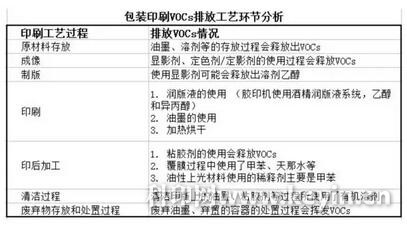The exhaust gas treatment technologies applied in the printing and packaging industry in China mainly include oxidative decomposition method, plasma method, adsorption method, condensation recovery method, etc., and the application effects of these methods are quite different.
At present, the most effective, most thorough and most reliable treatment method in the field of packaging and printing is thermal decomposition, that is, thermal decomposition of VOCs by high temperature combustion or by a catalyst at a certain temperature. The corresponding processing equipment mainly includes regenerative incinerators (RTO). And regenerator catalytic incineration (RCO). Since the process uses a highly efficient ceramic regenerator, the device itself has a very high thermal efficiency (up to 95%), so it can be compared to energy-efficient operation. In the United States, at the beginning of VOC governance 30 years ago, it was tried by adsorption, plasma, etc., but it was replaced by thermal decomposition. Due to its high thermal efficiency and purification efficiency, RTO can efficiently process exhaust gas under the condition of high energy consumption, and has high reliability and long life (more than 20 years). Therefore, in foreign countries, RTO is currently the most typical equipment used in the packaging and printing industry to treat exhaust gas. However, in some cases where the exhaust gas volume is large and the concentration is low, the concentrated runner technology can be applied.
1. Characteristics of exhaust gas in printing and packaging industry
See the following table for the exhaust sources in the printing and packaging industry:

The above-mentioned exhaust gas sources can be divided into two categories: organized exhaust gas and unorganized exhaust gas. Organized emissions are mainly from the printing process, especially the drying process, usually with special collection systems and emission systems; unorganized emissions are mainly derived from VOCs volatilized in each process, mainly in the workshop.
Organized emissions typically have the following characteristics:
More exhaust gas components and more complex exhaust gas components;
Commonly used solvents are: ethanol, ethyl acetate, n-propyl ester, n-propanol, isopropanol, etc., in addition to ink, varnish, primer and other volatile components.
The concentration of exhaust gas varies with the product or process;
Due to changes in the printed product, the type and amount of ink required to be used will also change, and the amount and concentration of exhaust gas will also change.
The exhaust gas concentration is typically around 2-3g/m3 (import);
Most of the low is below 1g, and the high can reach more than 4g; (the concentration of exhaust gas of domestic equipment is usually relatively low, and even more than 0.5g);
Exhaust gas components usually contain only VOCs;
It is relatively clean, free of dust or contains a small amount of dust;
The temperature of the exhaust gas is not high, mostly between 30 and 60 degrees;
The unorganized exhaust gas concentration is usually relatively low, and the amount of air to be treated is also large due to the large space for distribution.
Organized emissions are a major part of exhaust emissions, and organized emissions, if collected and treated well, account for 85% of total VOC emissions (but the official usually recognizes this range as about 60%).
Car Seat Accessories,Reclining Handle,5-Point Harness,Infant Carrier
NINGBO BABY FIRST BABY PRODUCTS CO.,LTD. , https://www.maxinfglobal.com